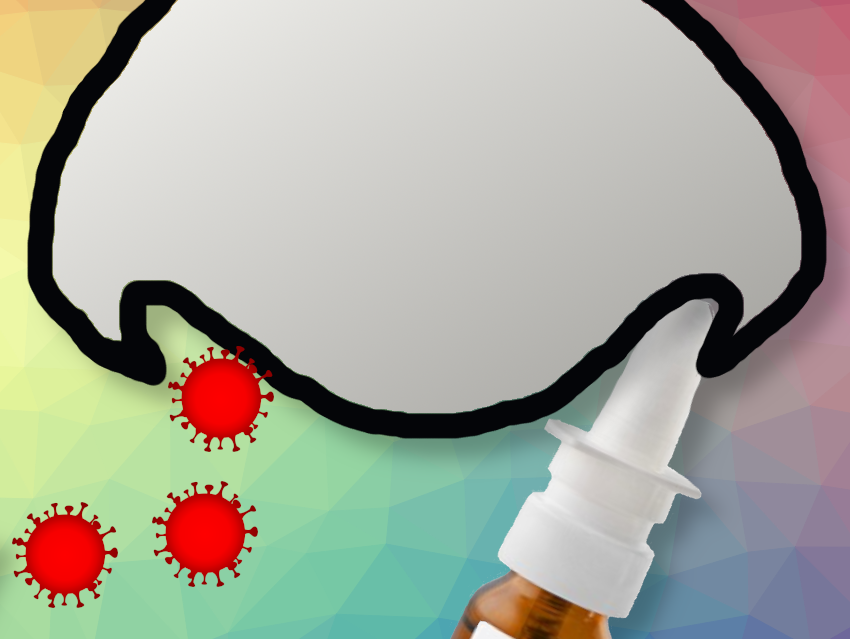Scientists are developing mucosal vaccines that can be administered through the nose to combat SARS-CoV-2 at the site of the initial attack: the mucous membranes of the nose, mouth, throat, and lungs. Ideally, a live nasal vaccine stimulates the formation of antibodies on site, preventing infection. Nasal vaccines are cost-effective, easy to store and transport, and well-suited for use where trained medical personnel are scarce. Two nasal preparations were approved in India and China last autumn, but the manufacturers have not applied for approval in Europe yet. The vaccines are based on attenuated adenoviruses, viruses that trigger respiratory or gastrointestinal diseases, but no longer reproduce or reproduce poorly, and thus, do not cause disease. Other live nasal vaccines are under development and being tested worldwide.
Live-Attenuated Vaccine against SARS-CoV-2
Emanuel Wyler, Max Delbrück Center for Molecular Medicine in the Helmholtz Association (MDC), Berlin, Germany, Dusan Kunec, Jakob Trimpert, Freie Universität Berlin, Germany, and colleagues have developed a live-attenuated vaccine against SARS-CoV-2 (vaccine candidate sCPD9) that is administered nasally and provides better immunity in hamsters than muscle-injected vaccines. Hamsters are the most important non-transgenic model organism for COVID-19 as they can be infected with the same viral variants as humans and develop similar disease symptoms.
The team found that after two doses of the vaccine, the virus was unable to replicate in the model organism. The immune memory was stimulated very well and the mucous membranes were very well protected due to the high antibody concentration. The transmissibility of the virus was significantly reduced.
Comparing Vaccine Efficacies
The scientists compared the effectiveness of the live attenuated vaccine with those of intramuscularly injected vaccines by vaccinating the hamsters either twice with the live vaccine, once with the mRNA vaccine BNT162b2 followed by the live vaccine, or twice with the mRNA vaccine or the adenovirus-vectored spike vaccine Ad2-spike. They then checked how strongly the viruses were able to attack mucosal cells in a subsequent infection with SARS-CoV-2 using tissue samples of the nasal mucosa and lungs, and determined the extent of the inflammatory reaction using single-cell sequencing. The live attenuated vaccine outperformed the other vaccines in all parameters, probably because it builds up immunity directly at the entry site of the virus and contains all virus components, not only the spike protein. This allows the immune system to recognize the virus by approximately 20 other proteins.
The double vaccination via the nose followed by an injection of mRNA vaccine into the muscle and a nasal live vaccine was found to provide the best protection against SARS-CoV-2. Therefore, the vaccine could be a particularly interesting booster, according to the scientists.
The researchers are working with RocketVax AG, a Swiss start-up based in Basel, Switzerland, to carry out safety tests and further develop the live attenuated vaccine against SARS-CoV-2. The biotech company is also preparing a phase 1 clinical trial in humans.
- Live-attenuated vaccine sCPD9 elicits superior mucosal and systemic immunity to SARS-CoV-2 variants in hamsters,
Geraldine Nouailles, Julia M. Adler, Peter Pennitz, Stefan Peidli, Luiz Gustavo Teixeira Alves, Morris Baumgardt, Judith Bushe, Anne Voss, Alina Langenhagen, Christine Langner, Ricardo Martin Vidal, Fabian Pott, Julia Kazmierski, Aileen Ebenig, Mona V. Lange, Michael D. Mühlebach, Cengiz Goekeri, Szandor Simmons, Na Xing, Azza Abdelgawad, Susanne Herwig, Günter Cichon, Daniela Niemeyer, Christian Drosten, Christine Goffinet, Markus Landthaler, Nils Blüthgen, Haibo Wu, Martin Witzenrath, Achim D. Gruber, Samantha D. Praktiknjo, Nikolaus Osterrieder, Emanuel Wyler, Dusan Kunec, Jakob Trimpert,
Nat. Microbiol. 2023.
https://doi.org/10.1038/s41564-023-01352-8




